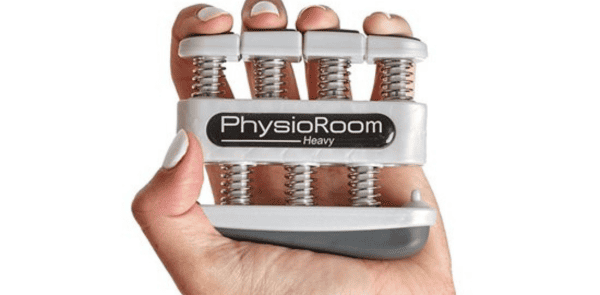The journey to recovery after an injury can be both challenging and rewarding. And to effectively regain your strength and mobility, having the right tools is key.
In this guide, we’ll unveil the world of home rehabilitation and the must physio equipment. Each tool will not only aid your recovery but also inspire you to reclaim your active lifestyle. Ready to take charge of your healing process?
Understanding Home Rehabilitation
Home rehabilitation is an alternative to hospital-based therapy. It involves a strategic approach to recovery within the comfort of your own space. It encompasses a range of targeted exercises and therapies tailored to your injury. This allows you to regain strength, flexibility, and functionality at your own pace.
Moreover, you unlock a multitude of benefits by doing so at home. For one, you can integrate rehab into your daily routine, saving time and energy. The familiar environment also provides a sense of comfort. It reduces stress and enhances the mind-body connection crucial for recovery.
Embracing home rehabilitation empowers you to participate in your healing actively. Paired with the right therapy equipment, it propels you towards a successful recovery.
Must-Have Rehabilitation Equipment
Introducing a diverse array of tools tailored to different aspects of rehabilitation. Here’s a roundup of essential tools to accelerate your recovery journey:
1. Physio resistance bands
These versatile bands offer progressive resistance, aiding in muscle strengthening and mobility enhancement. Available in varying levels of resistance, they accommodate different fitness levels.
Take this exercise tube, for instance. It has soft grip handles for uninterrupted rehab and training exercises. The red, blue and yellow coloured tubes provide light to heavy resistance. It’s ideal for progressing strengthening exercises.
2. Foam rollers
An indispensable tool for muscle recovery and tension release. Foam rollers work by targeting trigger points promoting circulation. What’s more, they alleviate muscle soreness post-exercise.
This foam roller 90cm makes a great example. It can be used in physiotherapy and as part of Pilates, Yoga, and rehabilitation training.
3. Balance boards
Enhance stability, proprioception, and coordination with balance boards. These engage core muscles and challenge your equilibrium. Using a wobble board also helps regain confidence in movement.
Top tip: Check out our guide on how to use a wobble board for effective usage.
4. Hand grip strengtheners
These hand exercisers are ideal for recovering hand and forearm strength. They are crucial for rehabilitation post-injury or surgery in the upper extremities.
If you’re looking for one, consider investing in this hand grip strengethener. It has durable handles and resistance springs. Great for strengthening your grip and toning your forearms.
5. Therabands or flex bars
Tailor your therapy with Therabands or Flexbars. Both are effective for rehabilitating specific muscle groups and joints. They enable targeted exercises that aid in recovery and improve flexibility.
6. Exercise balls
Physio balls are versatile and dynamic. They engage multiple muscle groups while enhancing balance and flexibility. This yoga exercise ball, for one, makes a valuable addition to your rehab routines.
7. Massage balls
Target localised muscle relief and trigger point therapy with massage balls. These help release tension and knots, promoting muscle recovery and relaxation.
Have a look at this roller ball massager. It features a unique design, and the roller ball provides an effective massaging technique. Using it helps to ease stress and tension, leaving you feeling relaxed.
8. Heat and ice packs
Manage pain and inflammation effectively with hot packs and ice wraps. These aid in reducing discomfort, enhancing circulation, and expediting healing. Our guide to how does ice therapy works is worth a read.
Each of these tools plays a distinct role in your recovery process. They offer a holistic approach to rehabilitation that caters to your specific needs.
Safety Precautions
Prioritising safety is paramount to a successful recovery journey. Here are key safety guidelines to heed:
- Consultation: Seek advice from a healthcare professional before incorporating any new tools. They can ensure the physiotherapy aids you use align with your recovery plan.
- Proper technique: Adhere to correct form and technique to prevent strain or injury. If unsure, seek guidance from a qualified physical therapist.
- Gradual progression: Begin with the lowest resistance level or intensity. Then, gradually increase as your strength and comfort improve. Avoid overexertion.
- Warm-up: Prioritise a thorough warm-up before using tools. Don’t skip, as these will prepare your muscles and joints for exercise.
- Listen to your body: Pay attention to your body’s signals. Discontinue any exercise if it causes pain or discomfort.
- Rest and recovery: Incorporate rest days into your routine. Doing so will allow your muscles to recover and adapt.
Remember, a gradual approach is your ally in achieving lasting and sustainable results.
Round-up
This guide has unveiled a list of resources that empower you to take charge of your journey. From resistance bands to massage balls, each tool forms a vital piece of your recovery puzzle. By embracing home rehabilitation, you’re embracing a physical, mental, and emotional journey.
Equip yourself with these tools, and blend determination with patience. And you can embark on a transformative voyage towards restored vitality and well-being!
Explore Physioroom for an extended selection. Discover the best home workout equipment UK, along with a range of sports first aid kits.
What you should read next: What is a Wobble Board?


